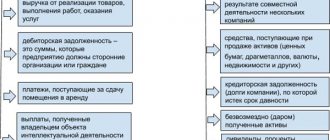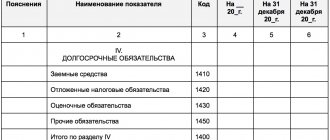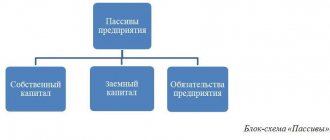Analysis of fulfillment of contractual obligations and product sales
Analysis of the fulfillment of contractual obligations in the process of selling products is an integral part of the overall sales analysis.
The analytical activities themselves when researching sales depend on an important point: whether revenue is determined at the enterprise by shipping goods or by paying for them.
Take our proprietary course on choosing stocks on the stock market → training course
Analysis of implementation usually occurs in the following areas-objects:
- Study of the volume of products sold (actual indicators are compared in dynamics and with the plan, factors influencing the sales volume are identified);
- Studying sales in terms of product range and range, identifying and investigating the causes of discrepancies with standards;
- Consideration of product quality indicators: individual, general and indirect (sanctions for low-quality products and defects); study of the influence of quality indicators on cost indicators: output volumes, revenue, profit;
- Studying the structure of products: the preservation of the planned proportions between types of products in the total volume of their output is considered; this is a very important point, since the structure of manufactured (sold) products affects all key economic values of the company: profitability, cost, profit, material intensity, etc.;
- Study of the rhythm of production - that is, the uniformity of product release in accordance with the planned schedule, taking into account the assortment and nomenclature; rhythmicity is the key to meeting deadlines for orders, irregularity is the reason for the deterioration of the organization’s economic performance;
- Shipments and sales are analyzed - actual indicators are compared with planned values and values of previous periods, growth rates are calculated, and appropriate conclusions are drawn.
When studying sales volumes, be sure to also examine the fulfillment of obligations under the contract. The percentage of completion is calculated using the following formula:
Kisp = (OPRpl – OPRn): OPRpl * 100% , where
K – performance coefficient;
OPRpl – planned volume of product sales in accordance with existing agreements and contracts;
OPRn – volume of products not delivered under contractual obligations.
Indicators of fulfillment of obligations under contracts are examined from the beginning of the year on a cumulative basis. They are calculated in terms of individual contracts, delivery times, and types of goods.
Factors of change in product sales volume
The main factors influencing the volume of sales of goods include:
- Fluctuations in product output volumes;
- Fluctuations in the balance of work in progress and intra-economic turnover;
- Changes in the number of remaining unsold goods;
- Change in shipment volumes.
Options for the sales volume analysis methodology
There are two main options for researching sales volume. They depend on how the organization recognizes revenue.
- The first option involves recognizing revenue from shipment, that is, the number of goods shipped is considered equal to the number of products sold.
- In the second option, revenue is recognized upon payment, that is, not immediately upon shipment, but only after receipt of money from the buyer into the account (by the way, this can happen before the goods are sent to him; in this case, the fact of shipment itself is not taken into account).
How to calculate product sales volume (formula)
Important!
The formula for calculating sales volumes depends on the revenue recognition method established in the organization’s accounting policy. The possible options were discussed in the previous paragraph.
If we are talking about recognizing revenue from shipments, then the balance of products sold takes the following form:
RPr = OGPn + VPrT – OGPk , where
Rpr – sold products;
OGPn, OGPk – balances of finished products at the beginning and end of the study period;
VPRT – production of commercial products.
The following equality holds here:
RPR = OtgrPr , where
Rpr – sold products, and OtgrPr – shipped.
If the enterprise has chosen another option - recognizing payment revenue - the following equality is satisfied:
RPr = OGPn + Tone + VPrT – OGPk – Current , where
OGPn, OGPk – balances of finished products at the beginning and end of the study period;
VprT – production of commercial products;
Ton, Current – balances of shipped goods according to data at the beginning and end of the period.
15.1. Concept and evaluation of finished products
The production process ends with the release of finished products.
Finished products are products that have gone through all stages of processing, completed, accepted by the technical control department and delivered to the warehouse, this is the final result of the produced cycle, assets completed by processing (assembly), the clear and quality characteristics of which comply with the terms of the contract or the requirements of other documents, in cases established by law. Products that have not passed all stages of processing and are not accepted by technical control are taken into account as part of work in progress.
According to PBU 5/01 “Accounting for inventories,” finished products are part of the organization’s inventories intended for sale.
The main objectives of accounting for finished products are:
- formation of the actual cost of finished products;
- correct and timely documentation of operations for the production of finished products;
- control over the safety of finished products in storage areas and at all stages of movement;
- control over compliance with the stock standards of finished products in the warehouse established by the organization.
The following product meters are used in accounting:
- natural (quantity, volume, weight, etc.);
- conditionally natural (conditional weight, grade, etc., depending on the content of useful substances);
- cost (volume of marketable products assessed at planned production costs, at actual production costs, at standard processing costs, at direct cost items).
Synthetic accounting of finished products is maintained on account 43 “Finished Products”, which is intended to summarize information on the availability and movement of finished products. This account is used by organizations engaged in industrial, agricultural and other production activities.
The unit of accounting is the specific item number of the finished product.
Analytical accounting of finished products is carried out in the context of item numbers by name, with separate accounting by distinctive features (brands, articles, standard sizes, models, styles, etc.), or by enlarged product groups: products of main production, consumer goods, etc. . P.
According to clause 59 of the Regulations on accounting and financial reporting in the Russian Federation, in the balance sheet, finished products are valued according to one of the following options;
- at actual cost;
- by direct cost items;
- at standard (planned) production costs.
The following estimates can be used in current accounting:
- at actual production cost;
- according to the planned (standard) production cost;
- at incomplete (reduced) actual production cost;
- at reduced planned production costs;
- at negotiable prices.
The organization makes the choice of a specific option for the accounting price of finished products independently and enshrines it in the accounting policy of the organization.
The actual production cost as the accounting price of products is used, as a rule, in single and small-scale production, as well as in the production of mass products of a small range.
The use of the option of assessing finished products at standard cost is advisable in industries with a mass and serial nature of production and with a large range of finished products.
When using incomplete (reduced) production cost of products, the actual or planned production cost is calculated without general business expenses.
Contract prices are used as discount prices mainly when they are stable.
When using conditional valuation in current accounting, deviations of the actual production cost of products from their cost at accounting prices are separately identified.
In tax accounting in accordance with Art. 318 of the Tax Code of the Russian Federation, finished products are assessed:
- in quantitative terms;
- by the amount of direct expenses.
Analysis of product sales, overall profitability of sales
In general, the volume of products sold can be calculated using the formula:
ORPr = KPr(x) * TsPr(x) , where
KPr(x) – quantity of products of type x;
TsPr(x) – price of product type x.
Example. During the quarter, the plant produced 200 parts A at a price of 200 rubles and 400 parts B at a price of 100 rubles. This means that the volume of products sold in monetary units was:
200 * 200 + 400 * 100 = 80,000 rubles.
This so-called absolute indicator is compared with planned values and levels of previous periods, and growth and growth rates are also calculated from it.
But, as you know, analysis is not limited to the study of absolute indicators. For a more reliable assessment of the enterprise's performance, relative indicators are needed to demonstrate the effectiveness of certain actions. When studying sales volumes, this coefficient is the total return on sales, which is calculated as follows:
RentPr = PPr/Vyr , where
PPr – profit from sales;
Vyr – revenue.
Depending on the purposes of the study, the indicators in the numerator may change. For example, if it is necessary to determine net profitability, then net profit is used instead of operating profit.
Profitability is also studied in dynamics and in comparison with planned values. The factors influencing it are studied. Thus, under other constant circumstances, an increase in the selling price of a unit of a product always leads to an increase in profitability.
Assessment of the dynamics of the volume of products sold
The volume of products sold is generally calculated using the following formula:
ORPr = Vpr + OGPrn – OGPrk , where
ORPR – sales volume;
Vpr – gross product;
OGPRn, OGPRk - the balances of the finished product, respectively, at the beginning and end of the period (usually a year).
The formula contains the concept of gross product. This definition is worth understanding in more detail.
Gross product is the cost of all manufactured products (work performed) for a specific period, including production that has not yet been completed.
Along with this concept, there is also a commodity product - this is the volume of products that are ready for sale, that is, processed accordingly.
In some cases, the volumes of gross and commercial output are equal.
Example. The annual output of products at the plant amounted to 400,000 rubles. At the same time, the balance of finished products at the beginning of the year amounted to 45,000 rubles, and at the end - 70,000 rubles. Accordingly, the annual sales volume is calculated as follows:
400,000 + 45,000 – 70,000 = 375,000 rubles.
Sales volume indicators are studied in dynamics over a certain period. Let's look at how this happens using a specific example. Sales data for the drilling equipment plant over the five-year period are presented in the table.
| Quantities | 1st year (base) | 2nd year | 3rd year | 4th year | 5th year |
| Comparison with base period (%) | 100 | 109,7 | 122,2 | 133,2 | 151 |
| Comparison with the previous period (%) | – | 109,4 | 111,6 | 110,1 | 110,4 |
The average annual growth rate is calculated using the weighted average as follows:
Т = N√Т1*Т2*Т3*…ТN
Substituting the numbers from the table into the formula, we get:
4√1,094*1,116*1,101*1,104 = 1,104 = 110,4%
We conclude that over the five-year period, sales volume increased by 51% with an average annual growth rate of 10.4%.
How to evaluate finished products
The accountant of an enterprise, when drawing up a balance sheet, or more precisely, forming line 1210, must be guided by Accounting Regulations 5/01. This provision is the main instruction when forming the cost of inventories for material and production purposes, which include finished products.
This provision defines the principles by which the cost of manufactured products can be calculated. The method used by the accountant should be applied throughout the tax period. Its purpose is to fix as clearly as possible the amount that is the cost of the product.
The specific cost of a given type of product must be based on production costs, which can be direct or indirect.
The accounting policy of the enterprise must establish how general production expenses will be distributed among the balances of finished products, as well as in what ways and in what order the process of writing off general business expenses will take place.
In order to collect objective and reliable information about products classified as finished, it is necessary to record their disposal: both by cost and by units of the product itself.
Disclosure of reserves for increasing sales volumes
The final goal of all analytical actions is to identify reserves for growth in sales volumes. This is necessary both to increase profits (profitability) and to reduce the balance of finished products in the warehouse (and, accordingly, reduce the cost of their maintenance, reduce the risk of damage, etc.).
Such reserves can be hidden in increasing the selling price, increasing production volumes to an optimal value (ensuring maximum profit at appropriate cost levels), advertising campaigns, searching for regular reliable customers (and strengthening relationships with them by providing discounts for “loyalty”, for example).
Reflection of sales of finished products in accounting
When shipping products to the buyer, the following posting is made:
Dt 62 “Buyers” Kt 90.1 “Sales, revenue”.
Further accounting entries depend on the cost at which the enterprise records products - actual or planned.
In the first case (if goods are accepted for accounting at actual cost), write-off is carried out through the following posting:
Dt 90.2 “Cost of sales” Kt 43 “Finished products”.
For the second option, if products are accounted for in standard quantities, entries are made using account 40 “Product Output”.
Dt 43 Kt 40 – products are accepted for accounting at planned cost;
Dt 90.2 Kt 43 – write-off of products (at planned cost);
Dt 40 Kt 20 “Production” - a reflection of the actual cost calculated at the end of the month;
Dt 90.2 Kt 40 – overexpenditure is written off, the excess of the actual cost over the planned one;
Dt 90.2 Kt 40 STORNO - savings are reflected, that is, the excess of the planned cost over the actual one.
Operations that are directly related to the process of selling manufactured products are accounted for using account 44 “Sales expenses”.
The role of finished goods in relation to balance
That is, a full reflection of the financial situation of an enterprise that deals with finished products is impossible without its reflection in the balance sheet, since in this case equality between Asset and Liability is impossible, which is a mandatory requirement for this type of reporting documentation.
The difficulty for an accountant is that in order to display finished products on the balance sheet, it is necessary to examine all the investments and costs that participate in the formation of the cost of this type of product. Again, if this is not done or the calculations are not done correctly, the balance between Asset and Liability will not be achieved. Such expenses may include:
- Production costs.
- Costs of paying wages to employees.
- Depreciation costs for equipment used in production.
- Insurance premium costs.
- Purchase of raw materials for production, etc.
It is the correctly calculated cost of production that will influence the reflection of the amount of the asset for this item in the balance sheet for a full overview of the financial condition of the enterprise.
The cost of these finished products is written off, and the balance is entered into line 1210 of the balance sheet. That is, the balances are included in the balance sheet, forming the amount from the actual cost or its standard version.
Volume of product sales in the balance sheet (line)
The balance sheet does not provide a separate line to reflect revenue (or the volume of goods sold). After all, this form of reporting shows the company’s assets, but the sold products, in essence, are no longer assets.
But the revenue is reflected in form number 2 - the Profit and Loss Statement. Here it is shown on line 2110 of the same name.
The balance sheet may reflect products that have already been shipped to the buyer (a sales contract has been concluded with him), but the money for it has not yet been credited to the account. In this case, the organization has accounts receivable, which are shown on the balance sheet line of the same name 1230. It is important to understand that in the balance sheet, revenue on this line is entered with VAT, while in the profit and loss statement a net indicator is used: revenue cleared of tax.
Profit from the sale of the product is reflected in balance sheet line 1370 “Retained earnings/uncovered loss.” Here, the operating profit is supplemented by the profit received from other operations in all types of activities of the company (both main and other).
Where is the volume of work performed in the balance sheet?
In a grocery store, 2.5 kg of Belochka sweets were sold per shift at a price of 345 rubles per kg;
25 loaves of white bread at a price of 31 rubles per loaf; 3 packs of “Piala” tea for 70 rubles; 2 packs of Dobrodeya noodles for 65 rubles. Let's determine the amount of revenue per shift that is handed over to the collector: TR = 2.5*345+25*31+3*70+2*65; TR = 1977.50 rub. Based on the above formula, we understand what methods can be used to influence revenue. Either increase the retail (in other cases selling) price, or increase the volume of goods (or products) sold. In the first case, the limiting factor will be consumer demand. In the second, there is a minimum profit margin (after all, the enterprise must remain profitable). Example.
Determine the change in the travel agency's revenue based on information about the price and number of vouchers sold.
What is enterprise profit and its types
Important Net profit is an important element in analyzing the efficiency of an enterprise. This is the balance of gross profit after taxes. Simply put, these are the funds that remain at the free disposal of the organization.
Using these finances, the company forms reserve capital, increases working capital, buys new equipment, and acquires shares of other companies. Part is spent on employee incentives: bonuses, corporate events, travel vouchers, gifts, assistance in purchasing housing or treatment.
The size of the indicator depends on several factors:
- revenue amount;
- production cost;
- amount of taxes;
- volume of other income and expenses.
Negative profits are called net losses. Many enterprises turn out to be unprofitable, despite successful activities during the year.
How to calculate sales revenue?
Naturally, today all the conditions that the direct counting method presupposes are practically impossible to fulfill, therefore, as a rule, the second method is used. Calculation method This approach is based on adjusting the balances of the sold product (work, services) of input and output nature. For the calculation, it is necessary to use the following algorithm: - B = O(init.
) + T – O(k) (formula: sales revenue using the calculation method). — B – revenue from sales of products (works, services). — O(beginning) – balances of finished products at the beginning of the planning period that have not yet been sold. — T – goods intended for release in the corresponding period. — О(к) — balances of finished products at the end of the planning period that were not sold.
Balance sheet profit formula
It is this indicator that is taken as the basis for calculating income and different types of profit from the company’s core activities. It does not include expenses or cash receipts from non-operating activities.
The calculation algorithm is very simple - information on sales volumes and the cost of a unit of goods are taken. If the price changed during the reporting period, revenue is calculated based on each such change.
Attention Other income that the company received not from the sale of goods is not taken into account. Formula for calculating revenue This indicator, like the profitability formula, is calculated taking into account the size of sales completed and the current cost.
How to correctly calculate the net profit of an organization?
Income from other sales Income from other sales is the total result of sales operations for the sale of goods and services that are not related to the main production activities of the company. The total monetary and profitable profit from other sales is affected by:
- sales of fixed assets;
- sale of intangible assets;
- profitability of inventories;
- sale of financial assets;
- material wear and tear;
- rental of premises;
- deductions for “frozen” production capacities and facilities;
Non-operating income Non-operating income is the amount of funds from operations that do not relate to the main production processes and are not related to the result of fixed assets, other income, performance of work and services.
Net profit: formula for calculating the balance sheet
Accrued calculation method: TR = Res.p (n) + GP - Res.p (k), where
- Ost.p (n) and Ost.p (k) – balances of finished products at the beginning and end of the reporting period;
- GP – production of finished products that are planned to be sold.
All calculations are expressed in monetary terms (rubles, dollars, euros, etc.). Examples of calculations The money that comes into the company as a result of the sale of goods or the provision of services is called revenue.
They are a means of reimbursing the company's costs and generate profit. Also, financial income can come from transactions with securities, leasing of objects, etc.
Example No. 1 Hydrosila LLC released products worth $25,000 in June; at the beginning of the reporting period, goods worth $8,000 were in the warehouse. At the end of the month, there were actually $12,000 left in the finished goods warehouse.
How is revenue reflected on the balance sheet?
Next in order of decrease are marginal (minus variable costs), gross (minus technological cost), sales (minus full cost), operating (minus other expenses with the addition of other income and interest payable), balance sheet (minus other expenses with the addition of other income), net (less taxes). How to calculate the profit of an enterprise All types of profit are calculated on the basis of revenue, which is equal to the product of sales volume and unit price.
Certain cost items are subtracted from primary income and thus each type of profit is found. General calculation formulas Revenue is calculated using the following formula: TR = P * Q, where TR (total revenue) – revenue, rub.; P (price) – price, rub.; Q (quantity) – quantity of products, rub.
Formula: sales revenue. How to calculate sales revenue?
Analysis using an example“) Operating profit reflects the efficiency of production or other type of core activity of the enterprise. Profit before taxation is profit without taking into account other costs/income from non-core activities. As a result, net profit, cleared of all costs and expenses, shows the integral result of the functioning of the enterprise.
Goals and directions for using the net profit indicator The amount of net profit characterizes the efficiency of the entire company/enterprise and is used for various purposes by various external and internal stakeholders (individuals, users). User/stakeholder Purpose and areas of use Investors Purpose: assessment of investment attractiveness Assessing the size and dynamics of changes in the net profit of an enterprise to analyze its investment attractiveness.
How to determine revenue from sales of goods, services or products
As you can see, there is a close relationship between them, and it can also be noted that there is a positive growth trend in the enterprise’s net assets, this indicates that funds are being directed to expand production capacity, which in the future should increase the amount of net profit received.
Is the credit rating of a company related to the amount of net profit? In my research, I analyzed the relationship between the amount of net profit for the Rosneft OJSC enterprise and the credit rating of the international agency Standard & Poor's.
There is a close relationship and correlation shown in the figure below - this proves the importance of such an indicator as net profit as a criterion of investment attractiveness not only in the national space, but also in the international arena.
Net profit of the enterprise. formula. methods of analysis and purposes of use
An increase in net profit increases the size of dividend payments and allows you to attract additional buyers/shareholders. Suppliers Purpose: assessing the sustainability of operation The net profit of an enterprise serves as an indicator of its sustainability of development.
The higher the net profit for the reporting period, the higher the ability to pay suppliers and contractors on time for raw materials.
Top managers Goal: assessing the sustainability of financial development The amount of net profit and the dynamics of its change serves as a guideline for developing strategies and plans to increase it at the operational level.
Planning of contributions to reserve funds, wage funds and production funds. Methods for analyzing the net profit of an enterprise Let's consider various methods for analyzing the net profit of an enterprise.
Source: https://kpa.ru/obem-vypolnennyh-rabot-v-balanse-gde-nahoditsya/
How to calculate the volume of products sold according to the balance sheet
Reporting is the main source of information for analyzing all the economic characteristics of any enterprise. After all, it presents the final indicators for the time period under study.
To calculate the volume of goods produced and sold using reporting forms, we will need the following lines:
- 2110 “Revenue” from the income statement;
- 2120 “Cost of sales” from the income statement;
- 12105 “Inventories” from the balance sheet.
The volume of products sold is equal to the number on line 2110 of the second form.
Production volume is calculated as follows:
the amount on line 12105 at the end – the amount on line 12105 at the beginning + the amount on line 2120.







